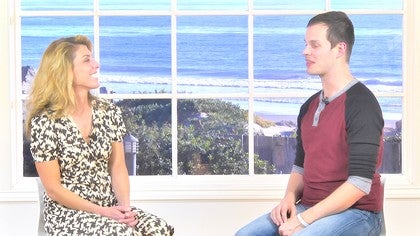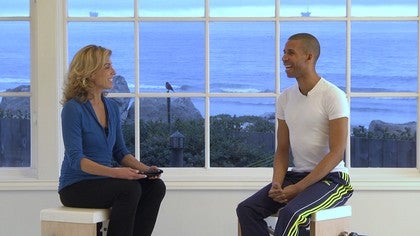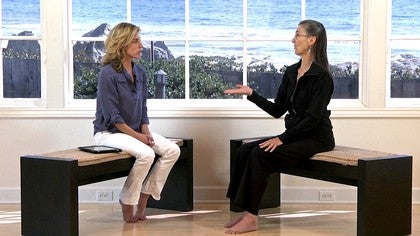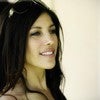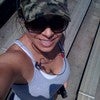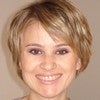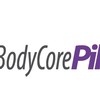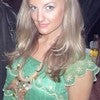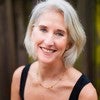Description
About This Video
Transcript
Read Full Transcript
Well, I first heard the word [inaudible] in my early dance career. So being in the dance world, uh, I was in a dance company, repertory company out of Minneapolis. I had moved from New York, which is where I was born and had been trained in dance to Minneapolis to be in this repertory dance company. That was quite amazing, actually. Amazing group of dancers, beautiful studio space, 32 week contract. Uh, and I got to work with some of the leading upcoming modern choreographers out of New York. So they would commission the choreographers. They would come and work with us for three to four weeks and create a new work on us. Plus we would train with them daily. Sometimes our company came, sometimes just the artists came. So the experience was on believable for me.
And it was Dan Wagner who was one of the choreographers who we worked with who I adored. Uh, he also came from Martha Graham background, so he was the one who said to me, because my body is very long and straight, uh, and very good for Cunningham technique. Uh, and his work really had a lot of like rebounding, spinal flection, you know, extension, lots of spinal movement. And, uh, one day he just came up to me and said, you know, you could really benefit by doing [inaudible]. And I was like, what is that? Now I'm talking about like the mid eighties, early eighties, 1980s. And so that's when I started looking and I got the book, the only book that was out there, right. Uh, Freedman and Isen. Right. And, uh, started doing the mat work. Uh, and then when I finally went back to New York, moved back to New York, I started really getting into it more. I first went up to Romana studio. Of course, that's who you hear about.
Um, but at the same time I was still dancing in New York in smaller downtown dance venues and working at the same time. So being a waitress and dancing all day and training all day is exhausting and very hard on your body. Plus at this point I was getting older, meaning late twenties, early thirties, and for dance, that's, you know, that's your prime for modern dance. And, uh, I answered an ad in a newspaper for personal trainer. And in 1986 or seven, they didn't really have personal trainings. ACE didn't exist. Well, as we know today, idea didn't have certification. It was very new. But this particular, uh, business called East side sports medicine center was run by three physical therapists. And one of them, uh, was Mark Molnar who is to to this day a dear friend and super mentor. And I answered this ad thinking personal trainer. I could do that.
I'm always going to doing that. I was like, Oh, I could do that. Um, and so, you know, I did teach a lot of dance and I just had this natural ability, you know, about the body. So I went in, interviewed, got the job and started working at this center. So at East side sports medicine center, uh, they had the, uh, leading dance companies came for physical therapy so that millions of Merce Cunningham dancers, all the Broadway show dancers, uh, New York city ballet, uh, now is solely, uh, the physical therapist for New York city ballet. So these were the types of people coming in to the facility. Uh, the other physical therapists, uh, Gary, uh, he was seeing the New York Knicks, the giants, you know, sees big basketball players would come in and he'd be like stretched their hamstrings, you know, like this leg this long, you know. So through them, uh, I started to learn more about the body and function and muscle energy techniques and they were really giving in teaching me the skills cause they needed me to work with their people, their clients. Uh, so they really, both Gary and Marika Molnar took me under their wing and taught me a great deal. So I'm indebted to them on my path of this, uh, work of the body in motion, being able to see it, seeing where it's being held up, being able to help a person free up where they're being held up to maximize their ability, which helps, you know, less than pain if they have pain or just improves their function. Um, so I learned a lot from them. Um, and you know, I had been going over to remind us, but it was Monica [inaudible] said to me, you know, you really should go over and, and, and, uh, see Jean-Claude West and you should go take a course with Irene Dowd and you should. So she kept, you know, guiding me so that anything that Monica told me to do, I was like, sign me up.
So I did study with Irene in New York and then I met Sean Claude West, uh, who was, uh, down on Bleaker Bleaker street and a little loft where he lived with his wife, Ana Schmidt. And uh, they had their PyLadies set up. Um, both of them kinda came through Bruce King. So we're doing family tree. Um, I know Ana had worked with Bruce King and um, JC, also with Bruce King. And then he also worked with Kathy grant very closely, um, because again, he started getting a lot of clients, um, through the dance world. Also through Monica sending her, sending him, uh, the dancers. And then Kathy being at NYU, she would send people over to JC. So again, it was that dance world. And then seeing how he was working with applies apparatus, what he was doing to create better function for them and strength, uh, through the method. But then he started working with Louis Schultz who was a re-offer, uh, who's, um, written a few books and he's one of those kind of original Rolfers and Louis and, um, Chasey spent a lot of time together. And so JC started developing how to do a lot of hands on and work with the plot is apparatus. So Lewis was fascinated with the movement of the reformer and the trap table.
And then of course in roughing, a lot of times they're doing a fashion stroke while you're moving. It's how they kind of right get in there. So they were using the apparatus, Lewis and JC, and doing these strokes and doing these hands on work. So amazing work. And this was in the late eighties. Uh, so I was exposed to that, uh, through them and I had regular sessions, uh, also on my body. So I receive a lot of the work that I go and search out as well. You know, I could experiment and plus I want to be well as well. So, um, those were pretty much in my early years. So it's interesting to come into [inaudible], uh, through a book and then through the tradition, uh, of like just starting with Ramana. Um, but then getting exposed to this already evolving method that actually JC was really a spearhead to more contemporary Pilati is if you want to call it that, uh, of what he was doing. And, um, he was always working and kind of staying in his own little world. So he never, and to this day, uh, some people have heard of his name. They, I talk about 'em all the time, but not a lot of people. Uh, he doesn't put himself out there so much in the world because he's so focused on his work. Um, and so my direction through body work just started going through from them.
Um, I have to say, I, uh, between training, I was still training as a dancer. I was taking regular ballet class with Maggie black. Uh, Maggie black is a premiere. Um, the LA teacher, she just had her own studio and she trained, um, the American ballet theater dancers. Um, a lot of the Cunningham dancers were there. Um, pretty much, um, I focused on Cunningham because that was the style that I was dancing, but pretty much any top modern dancer would be in this class. Um, you had to be invited to take your class. You just couldn't walk in and pay for a ballet class. So I had a ballet teacher, um, Bonnie Mathis who was with, um, she danced with American ballet theater and danced with Paul Taylor. And she said to me when I had left Minneapolis, cause that's where I was studying with Bonnie. She said, if you're going to New York, you have to go train with Maggie black and I'll put a word, you have to have someone put a word in. So, so I show up and Maggie is very gruff, New York, tough, you know, ballet teacher. And I walk in thinking I have permission now. You know, cause Bonnie said, yes, you can go. So, you know, cause you go in and she's like, who are you? So, and then I had to, you know, tell her. And then, so I was allowed in the class and I was blown away being at the bar, standing next to Martine van Hammel.
And in front of me is Kevin McKenzie, who was the director of the, of the American ballet theater. Now these were their two premiere, you know, here I am sandwiched between these two people that I have seen on stage, you know, and um, wow. So that was really interesting. But between studying, still striving, my dream was to maybe get in the Cunningham company. I was taking company class, I was invited to take company class with them. I knew a lot of the dancers and all, but you don't have to say that I was like 30 years old by this point. So, and I had worked with Merce, he was one of the choreographers who came to Minneapolis and set one of his older pieces on us. Uh, our company was the first and maybe the only company that he gave permission to allow us to do his work. So he sent Chris Comber, uh, who's amazing teacher. I'd never trained so hard in my life in that one month period cause it was, uh, seven days, a week, two hour class rehearsals, all afternoon, just nonstop, for solid for a month. And uh, you know, we, and then Merce came to us and watch us PR in rehearsal, do his work. So it's like standing in front of God and going, okay, I'll do my best now. So it was an incredible experience.
So being back in New York, I immediately went to the Cunningham studio too, so, and I had been performing, so you can imagine a life of, uh, training as a dancer, still still auditioning, still getting small pieces, rehearsing, doing your [inaudible] cause I was so interested in that training, hanging out with JC and working at the sports medicine center. I mean it was incredible life, you know. Um, so through also through the sports medicine center, uh, I met Roberta Kirschenbaum who today has, um, just pull out his old address for her studio. Um, and Roberta is, uh, a real old timer though. Not, I hate to say that cause it sounds like she's all, cause she's not, we're pretty much the same age, but she was working at the sports medicine center, uh, also, and I just needed to happen to need a place to live. And she had a, a two bedroom rent controlled apartment, didn't have a roommate. She didn't need to have a roommate because her rent was very reasonable. Um, so she offered to let me live with her, uh, for a period of time. So I did, I moved in with Roberta, not really knowing her and I walk into her apartment and she has a whole living room full of Pilates equipment in her apartment and she'd been seeing clients in her apartment. And um, so it was really interesting. So she actually started teaching me, you know, some of the work on the reformer. Roberta worked for Romana and she also worked for Corolla.
Uh, so her, her history and she was very close to Cathy grant as well. Um, so it was interesting getting kind of information from her. I did stop doing sessions with Romana fairly quickly. So my exposure to her, I had some privates with her, was very brief, um, because of time, uh, and because of the nature of how, how she was doing the [inaudible] and how differently Roberto was doing it in some ways and most importantly how JC was teaching me. Um, and I recall a conversation with JC who said, you know, you really have to choose this. Like you have to choose a dance style. You know, you can't, um, you want to be a ballerina or if you want to be a Cunningham dancers, very different from being a Martha Graham dancer or very different to be Jose Lamone dancer, completely different styles. And you really need to, uh, embody yourself in that movement form, you know, to really truly, uh, capture it and be that form. So I was at a crossroad right at the beginning of my exposure to Polonius. It's like, okay, I have to kind of choose what direction.
And I was just so drawn to, uh, the way JC was working that I had made that decision to discontinue working with Romana at that time. So, but through Roberta, I was able to, um, get more of the traditional classic work from her and also through Roberta. She was the one who introduced me to nausea, Corey, um, Nasha Corey, uh, is also real name or her before she changed her name, uh, was Dolores Corey. And, um, meeting that woman was, uh, a remarkable experience for me. Um, she was older, I think. I'm not sure she's older than remodel, but she's definitely of the same generation of Romana. She also worked for, um, Joe Joseph PyLadies as a main teacher. And I just came across an article that I had in a file, uh, from some newspaper, uh, in New York city. And now in seeing Joseph [inaudible], he's opening up his studio and Bendel's and the main teacher who was opening up the Bendel's Palladio's was Deloris Corey.
So she was actually the, according to this article, and I'm not a historian on this, and it would be interesting, I'm sure people are working on actual history. Um, but according to this article, uh, nausea as I know her, uh, was the person who was gonna head up the Ben Dal's Pilati studio that Joe was opening there. Now, what happened in that period of time where like when Romana came in and nausea went out, or did they work together? All those questions? I, I have no, no idea, but, but that's to me a, an elder teacher that has not been written up or have gotten any credit. Um, mainly because again, she was a little hermit in her studio. Uh, her studio was down by city center, um, which is the big theater for a lot of ballet performed. And, uh, it was up in the back. It would take this elevator up and, and it opened up into her space. Uh, she was very, very, uh, structured, strict. Uh, it was only for women. No men were allowed. She only worked with women. Um, you had to wear a tank, top, a leotard and no tights. One day I showed up with a camisole leotard, which is a, um, strap, not a thick tank. And she sent me home because I did not have the right liothyronine.
So it's very interesting. What I learned the most from nausea was about feet, your legs in standing, she would work, you standing, uh, and the mat work. She, uh, would not allow anyone on the equipment until you got your feet organized. Uh, and she had this little routine, which I have taught very simple, uh, the foot exercises that we are doing in the class, um, which I had learned from nausea, uh, and we had to be able to do that very well. And she had to approve of you doing the movement before she would let you get on the equipment. Um, she said you can always tell a good Pilates teacher by their feet. So I'm sorry. I always think of that and I keep working on my feet. Um, and she also taught me the discipline and the shape of all of the mat work.
So the other thing she made me do in this math class was I was only allowed to hold the positions of each exercise so I wasn't allowed to move. So the hundreds, I'd be lying on the mat with my body, curled out in my legs, out, my arms extended, just breathing in, holding. And then single leg stretch, I'd go into the position and hold and then leg circle. My leg would go up and I had to hold. I couldn't do, she wouldn't allow me to do any of the movement until I had memorized each position, the transition from one exercise to the other and that my form was good. And then once she felt that you had that, then she let you actually move your legs. Things like that. So the focus, uh, and what my mind was going through during that thinking, I was in a room of ordinary people, not dancers. All right. So all my plies experience with this point was pretty much with dancers.
Now I'm with nausea, worked with a lot of women who were business women, just ordinary people. Really. And here I am thinking I'm a professional dancer. I trained, I am like a way better mover than any other person in this room. And how dare you, you're just making me, so I'm saying the mind. So as I'm holding these positions and everyone else is doing the movement, I was paying attention to what my little story was going on in my head. And then I started realizing about the concentration and focus that I wasn't focusing, that I was, you know, kind of. So she really, I got some real depth from, from nausea. Unfortunately, I only had about four months with her because, um, what started to happen, I had a, uh, a reason I had to leave New York and then as I had to go back to Minneapolis, and then I got an invitation to come out to California to work with Margaret Jenkins, who's a choreographer, uh, who comes from the Cunningham technique, but she's a renowned choreographer in the San Francisco area and I've always loved her work. And the dance company that I was in in Minneapolis, uh, actually commissioned to works from [inaudible]. And, uh, I really enjoyed her process and her work. So I get the phone call.
I want you to come out to San Francisco and, you know, join in this process. She's a very processed person. So I was like, I'm great. So I, you know, in New York it was a hard life. And, um, being my age, you know, the, the dream of being in Merce Cunningham's company really wasn't gonna come to fruition. Um, but to, to explore dance further with an artist who I totally admired. Uh, and she worked in a very creative process, which I also did choreography of my own. So I was also doing that, creating my own work. So Margaret's company is a great place to be when you're a creative mover also. So I took the call, came out to California and uh, was, um, in rehearsals with her working with her. And again, her company was changing and I didn't really get in, you know, like it's a permanent thing, but actually her company started dissolving and then re birthing into something else at that time. Um, so I come out to California thinking of moving here.
Uh, and then I'm gonna have this dance job. And, but there really wasn't any place out here, not like in New York except for, uh, at the hospital, st Francis hospital. They had a place for the San Francisco ballet, um, set up there and mercy Sudbury, who was a dancer with Margaret Jenkins, who I met in Minneapolis in the early eighties, cause she was in Marty's company, had come with Margie and had been rehearsing with us. And there was something about mercy when we first met as we just like went, we're friends and we just, I don't know, it was just this immediate kind of connection we had. And then, you know, of course I hadn't seen, I didn't see her for about five years. And so coming out to work with Margie mercy was here and we renewed our friendship and she was teaching [inaudible] at um, st Francis. So she said, you got to come up to the hospital, which sounds kind of weird, you know, to do [inaudible]. So I, you know, was working with, I ended up performing with mercy. She was a choreographer as well. So I get to work with her and mercy, uh, did a lot of work with Eve Gentry.
So that was my introduction to Eve. Gentry, uh, was through mercy. Mercy's a wonderful teacher. Uh, and so I went up to st Francis and to work with mercy, uh, check it out, do some [inaudible] and that's where I met. Um, Elizabeth Larkam and I met noro had, you know, they were working there and there were a few other teachers there as well. Um, and, but to be honest, as I was watching them work, um, I was like used to the way I had been in New York and was very curious about their variations and how different it was even they were, they were doing was, was different. So I, I found that very interesting. And, um, so they were interested in me as well because of the knowledge that I had, you know, coming, coming in there. So, um, I looked into being hired, uh, at the hospital and they were very interested in hiring me. So I decided to actually move to San Francisco permanently because I thought I could get a job at st Francis and have a chance to get into market Jenkins dance company, my two dreams of my life here. So, uh, so I move, I move out to California, do the whole thing and the market GenCon thing falls through and the hospital falls through. They had a hiring freeze, so they weren't hiring anyone there. I was jobless, didn't have my dance career that I wanted and I did hit my personal trainer credit with me cause I had a ACE did or idea, finally came out with a personal trainer exam. Uh, and so I took that first exam with them. So that was 30 years ago or so. Uh, so I had that piece. So I thought, okay, I need a job.
So I went to the Bay club, which was a, it's a Maine very nice club here in San Francisco. And, uh, I actually did the American college of sports medicine tests at their facility. And, uh, so when I was interviewing for the job, the woman, uh, who was hiring, she said to me, I was overqualified, you know, and I was like, but I need a job. You know, it's like, I want to be a personal trainer. It's like, no, you're overqualified. We can't hire you. So I was really, you know, and um, there was a doctor at st Francis, um, very nice, um, orthopedic doctor woman. I don't remember her name off the top of my head who said to me, uh, she said, you know, there's a woman who has a, um, personal training, little private place. She works by herself and, uh, you maybe should go meet her and talk to her. Maybe you could work with her. And, uh, Jackie Thomas was her name and Jackie was, uh, an amazing athlete. I think she was from UC Berkeley basketball team, uh, incredible athlete and a very sought after trainer. And she had, first time I ever saw someone's own little personal training place with all the weights and all that stuff. So she was like, yeah, come on in. You know, I'll, you know, hire you. And so when she started getting extra clients, she started feeding them to me.
But then it was interesting is she was a heavy duty power lifter. So one of her clients would complain, you know, their shoulder hurts. And she'd say to them, uh, all right, I don't want to hear that you go over and work with Madeline and then when you're better come back. So then all of a sudden she started sending me, uh, her people who were not, who would have some kind of issue, you know, and then I would work with them in the plot is away with the hands on. And I didn't have equipment in her space. I had a mat. And then various props that I would bring in. Uh, that was the time when nobody was using balls. Nobody was using rollers. Uh, I had to order, uh, some rollers from, I searched out this company that was somewhere in Sacramento that made these rollers for packing.
They must have thought I was crazy and I would call them up and they would send me, uh, they were so long, they were three times the size of a normal roller that I would have to get a saw and cut them into three pieces to the rollers that we know of today, you know, and I would bring these things in and kind of work with people. So, so Jackie Ashley was the one who gave me the job in San Francisco and that led me to a little more personal training in home things. And then eventually I opened a little studio or the studio, the first studio I opened in San Francisco, which is really the first independent studio. There was no other place to do Pilates in San Francisco except for at the hospital, which, unless you are a patient, no one really went there. Uh, and personal training was just starting in San Francisco was already a big thing in New York, but in San Francisco, people were still just starting to do this personal training thing. So, uh, the first studio I opened, uh, was in a very bad neighborhood at San Francisco in this incredible building cause it was lofty, like, and uh, there was a woman who was very, uh, ahead of her time, she was a hairdresser, but started this idea of a day spa and the day spa, um, she started having massage therapists, estheticians, and as we know what day spa today, but there weren't even any day spots at this point. So I got a room from her and I started, uh, with just a reformer, a ball, and the space was so small, plus I couldn't afford a trap table at this time. So, you know what I did, they have to remember, this was 1990. I had a friend who was a sculptor and he built me a bench, a small bench that I wanted a certain height, which was the height of a trap table. Uh, because I also did some work on the bench and I wanted it to be a certain width so that the spine would be supported, but your arms could go off the bench. And, uh, so he built this bench for me and then I got long Springs and a rollback bar and I nailed them into the wall. So, you know, I put out islets into the wall and I would hang the Springs and I just put them on the wall because that was my way of trying to create a trap table.
So I did a wall unit without even knowing it, you know? But it was a way, it was just, you know, what I needed to do to do my work and how I can be creative. And having this friend who was an artist was a person who said, why don't you just, he was one of the, just put the Springs in the wall, you know? So I was like, Oh great. So I kind of started there and then I started moving more towards the golden gate bridge. So the studio started to grow, people started coming, you know, that saying build it and they will come. That's kind of what happened because I started getting people who lived on the other side of town somehow coming to me in a really bad neighborhood. Now it's a very fashionable neighborhood, but at the time it was, but luckily the police station was right across the street. So, and then it just evolved. And then eventually I got a nice space, um, over by the Presidio, which is called a body of work, which is still there. Uh, a body of work is now owned by Jean Sullivan, who, um, was a teacher, worked with me for a very long time. And then when I moved to Sonoma, gene took over the studio, uh, and she's done a great job.
That's nice to know that a body of work, it's still in business 21 years later. So another person really influenced my work, uh, that's Eve Gentry and I, uh, heard about Eve through mercy Sudbury. So, and at that same time, around 1990, 91, maybe, uh, I get this letter in the mail, uh, from this Institute of [inaudible] method starting in Santa Fe, and they wanted me to join and I was like, wow, like somebody actually organizing, you know, a community, you know, and we're not all scattered all over the place, all isolated and working. And I just thought it was an amazing idea to do. So of course I sign up and, uh, the Institute was started by Joan Breitbart and Michelle Larson, uh, who I didn't know either of those two women before. Uh, and um, Eve Gentry was a real important person to them in starting the Institute. Uh, so I went down to the first meeting down at the Institute or one of the meetings, I don't know if it is the first one, but, and went and, uh, that's when I met finally each January. So I kept going back down and, um, having private sessions with her, I knew right away I was like, I want sessions, you know, I can do the workshops at the Institute and hang around there. But I wanted to really be with this woman. And Eve, I learned this is such a fascinating, like full circle for my [inaudible] career because if January danced with Hanya home and hung your home was a German, uh, Korea, a dancer, choreographer who had also moved and left Germany about the same time as Joseph [inaudible] to New York and which she was teaching dance. And, um, choreographing.
She's known for some Broadway shows and things and she's a huge influence in the type of modern dance that was more of Alvin Nicholai and Marie Lewis style of modern dance, if you're familiar with them. So she was their main teacher when I was in college, so I'm rewinding a little bit, but when I was in college, the, a lot of the teachers I had in college were of this style, not Cunningham, which I loved, but this other style, which I also loved because it was very creative. And so that was also the part of the movement part that I really enjoy doing. So I ended up spending two summers studying with Hanya home and, uh, she did a like two month summer course and Hanya uh, training, um, would you would do, uh, this whole routine on the floor is this all I knew you walk in instead of starting a class, standing up and doing plea A's and tondos and things, she would start you on the floor. We would do this like 30 minute routine nonstop.
And then we'd stand up and then she'd have us doing things in the center and then a typical dance class going across the floor. So, and then I continued, uh, working in that style of dance. So you're always around the floor. And it was the same thing over and over again. And so when I met Eve Gentry, I didn't know that she had danced with Tanya home. And when I was in Minneapolis, it was another choreographer that I adored and was also a very good teacher of mine, whose name was Nancy Houser, Nancy Houser dance with Eve in Hanya Holmes company. So she knew Nancy cause they were co performers. And, uh, Eve was the one who told me, what do you think on your home was doing on the floor? I said, Fluor bar, you know, she's like, no, it was [inaudible] mat work. So I came to learn that Hanya Holm had connections with Joseph [inaudible] and she was using his material in her training of the dancers.
So I was, because it felt so for when I started doing NACHA Cory's mat work, it did feel familiar to me. And I'd never really connected those dots. And Eve was the one who connected that. And I started feeling like, Oh, I've actually been doing these since college, like it's been many more years. And I had actually realized that that connection, so that, that was really amazing. And then Eve had her way of also looking at the body and being able to just kind of like Cathy grant. They both had such a gift in, in being able to see, they may not be able to verbalize technically, uh, anatomically or technically what they were seeing or doing, but they just had this knack of being able to get their hands right into that area that's not moving and, and help facilitate it to happen. Uh, so she would do things with me, like she had me lying on the floor, on my side and, you know, stuffing balls and all sorts of places and having me move and press. And so, and all of this was to get you moving before you got on the reformer. So that's what Eve did. And, uh, just a month ago, Michelle Larson sent me a letter, uh, where she sent me, um, a page of Eve gentries notes, like her assessment, her, her notes on me, which was delightful to have.
So I have her Eve's handwriting, um, and her notes on her assessment of my body and my work and, and all of that, which was, um, really neat to have. And so I thank Michelle for sending me that cause, uh, that's a really special thing to have. Um, so that was my exposure to Eve and it really, she really did influence my way of teaching people, getting people to feel, uh, their breath to feel how their hip joints move independent of the pelvis. Uh, how that connection of the spine, you know, attaches with the shoulder girl and being able to have all those principles, how to extend well, how to twist well, and then putting it into and shaping it into the [inaudible] repertory. So she had such a great ability of breaking down the movements so that people can really, uh, be able to do the mat work, uh, the best way that they can. And get the benefit from it. I remember Mary Bowen contacting me in the early nineties or mid nineties.
I actually, let's say Cooper was born, that's my son. So he was born in 94 so it had to have been like in 95 or 96 now. And the Institute had really developed a teacher training and I was involved with that training and Mary Bowen invited me to come to her studio in North Hampton, Massachusetts to do a mat teacher training at her studio. And I remember kind of like, wow, you know, I had never met Mary. Uh, I only knew of her because of her elderly. I don't mean that she's being her position as a teacher, an original teacher.
Uh, and I had heard about Mary through Jean-Claude West because she also studied with Jean-Claude West. So, um, anyway, it was, I was delighted and also kind of a little intimidated in a way that she invited me out of all these teachers to come, you know, so of course I said yes and I went out to her studio out in North Hampton, mass. And you're gonna love this because there were like 30 people had come to this training cause nobody, I think on the East coast had really started or the P the Institute was just starting. So I had in my class Kelly King, that's where we met. And the minute we met, we looked at each other. We were like instant love twin sisters. We call each other and uh, Howard says shell was there, Phoebe was there, Susan Moran was there. A, there were all these teachers that had come, uh, you because they, they are already, you know, there were no teacher training programs. This was truly the first, the institutes was the first teacher training program for Pele's. So all these other folks were either going to do the institutes program like Kelly was doing it. Uh, or as in the case of Howard and Susan Moran, they were developing their own.
So they came to see how is it a course like this is done. So, uh, yeah, it was amazing. So they all came and we all had a great time. So here are all these teachers in the room and I'm teaching the teacher training for the first time on the East coast, and they had all come to see what a teacher training program is like. So, um, it was wonderful.
And the way I taught the course was I started with an anatomy section and then into, uh, more of fundamentals work and then of course, the mat work. So my work has really expanded over the years, um, because of my desire and interest in really figuring out how the body works and every layer, each time I get introduced, somebody comes into my life or something comes in and it says, Oh, you should really look at this piece. So that really led me to, uh, starting with, uh, orthopedic work with Tom Hendrickson, who is a, uh, he's a chiropractor, um, by label. Uh, but he has been doing this form of, um, body work. Orthopedic massage is what he calls it. Um, and it's, it's, uh, a source of, um, kind of a combination of raw feeding with a bit of a comfort and realignment of muscles. So his teacher was a man named Lauren Berry, and Lauren Barry was known for, uh, really, uh, understanding where the muscle and fascia fall out of place in the body when there's a dysfunction and where it actually should be in line for optimal function in the, in that system. So I got interested in that fashion muscle, muscle, skeletal, uh, systems in the mid nineties, having met Tom Hendrickson in his work. So I studied with Tom for two years, uh, and I still use his work and especially the muscle energy techniques, uh, of his, which I incorporated into the [inaudible]. So it's another course that I teach is using, met with Pele's, but then that led me into, um, a physical therapist friend of mine who had come to me because of her injuries, uh, uh, to work with the [inaudible]. And one day she called me up and said, you know, Madeline, you should really do this cranial work. And of course I'm thinking me cranial work. Ah, really? You know, so I thought, okay, I'll give it a try.
And so I met Sharon Weisel fish and her group, um, which is now it's called IMT, which is called integrative manual therapy. And this has probably been about 10 years when I had met Sharon and her teachers. And so this work started getting into the realm of more like a cranial work energy work. I'm learning other modalities outside of muscle tissue organs, working with the Oregon's, uh, working with the cranial system, working with diaphragms, uh, working with the circulatory system, working with the nervous system. So all of a sudden the body's becoming more full, so we're not just bones and muscles, which is all the workout and all that I've been doing and working with.
And I started realizing the other structures of the body are having a huge impact on the muscle skeletal system or the muscle, you know, that's really the root of it. So it was kind of like another whole layer got opened up to me. So I just continue, I'm in this constant pursuit of learning and so then I bring it, but I always bring it back to movement. I can't, I'm a movement person. So, uh, I can see where these other systems have an effect on the movement and how you can just introduce maybe a certain movement or a way of touching someone or a way of setting up the equipment in a certain way to get the effect that perhaps a cranial session could give someone in doing it. So I'm really interested in trying to evolve the work into this bigger, including all the systems in the work, but then still staying with movement. Okay. My studio is located in beautiful Sonoma, California. Um, when I drove up there on a, on a Sunday one day just to visit the town, I fell in love with it and said, I want to live here someday. So, um, in 93 I found this old house. It's over a hundred years old. Uh, and I chose to live there. People thought I was crazy, uh, because Sonoma at the time was very rural. It's, it's now become a vacation destination. The towns changed a lot, but that's good for my business. So I have a very nice studio, uh, in Sonoma downtown. Um, and we have, uh, Gyrotonic equipment and Polonius equipment.
There's a staff of five or six trainers, um, very nice facility. So I'm very pleased. It's my home base. Uh, I do travel a lot now. The last couple of years I've been, I teach, um, I have groups of people around the world that keep having me come back. So I go to Germany twice a year, Japan twice a year, uh, as outside of the U S and um, and then I teach a lot around in the U S nice. I have now taken my, I had a mastery training, uh, where it was a nine month long, uh, program cause people wanted to know what I was doing and, and work with that. Um, but then it became such a big, long commitment that the people were, I wasn't getting enough signing up, I think of a little ahead of the curve of this bulk of this work.
So I ended up taking, taking this work and I'm always working on it and I've changed it into these two to four day workshops. So I incorporate different areas. So if you wanted to come and study, uh, choices would be the check where I might be around in the country or the world and or come to Sonoma, which is a wonderful place to come. Best place to check is on my Madeline black website. Different from my studio website. I have two websites cause the training website has the calendar of where I'll be. And um, so that website is www dot Madeline black dot U S and the studio is studio M [inaudible] dot com. We also do teacher training basic, you know, I want to say basic, but we do traditional Polonius training, incorporating a lot of knowledge with anatomy and biomechanics in a core strengthening of the work of plays. What you need to have, I feel, in order to advance into this work that I'm doing now because that's where the sources from and it grows from here.
So you have to have the foundation of a good solid Palladio's training to then evolve into how, where I'm taking the work. So we offer this really great core, uh, Palladio's training at the studio. So that information is actually on both websites.
The Teacher's Corner: Discussions
Comments
Cheers.
Yes it was Gary Guerriero and Mary. It worked under Gary and with Mary!
You need to be a subscriber to post a comment.
Please Log In or Create an Account to start your free trial.
